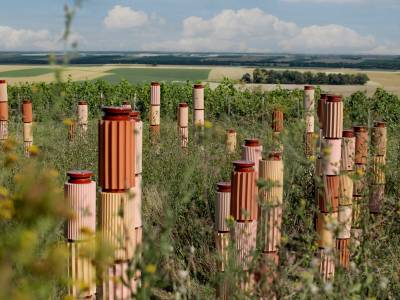It’s an enigmatic sight. A crop of 74 ceramic columns in soft, earthy tones stand sentry around the perimeter of a 285 sqm patch of unruly overgrowth, discrete from the low regimented rows of vines populating the gentle slopes of Les Agusons, Champagne. We are visiting the Perrier-Jouët vineyards in Ambonnay and this simple architectural gesture, called Biodiversity Island, has been conceived by the experimental design studio FormaFantasma.
Perrier-Jouët goes Eco with FormaFantasma
19th September 2024
Iconic Champagne house, Maison Perrier-Jouët have teamed up with research-based design studio, FormaFantasma, on this project to pour bubbles with biodiversity. Bethan Ryder takes us through the new partnership and how it's set to future-proof Champagne farming.
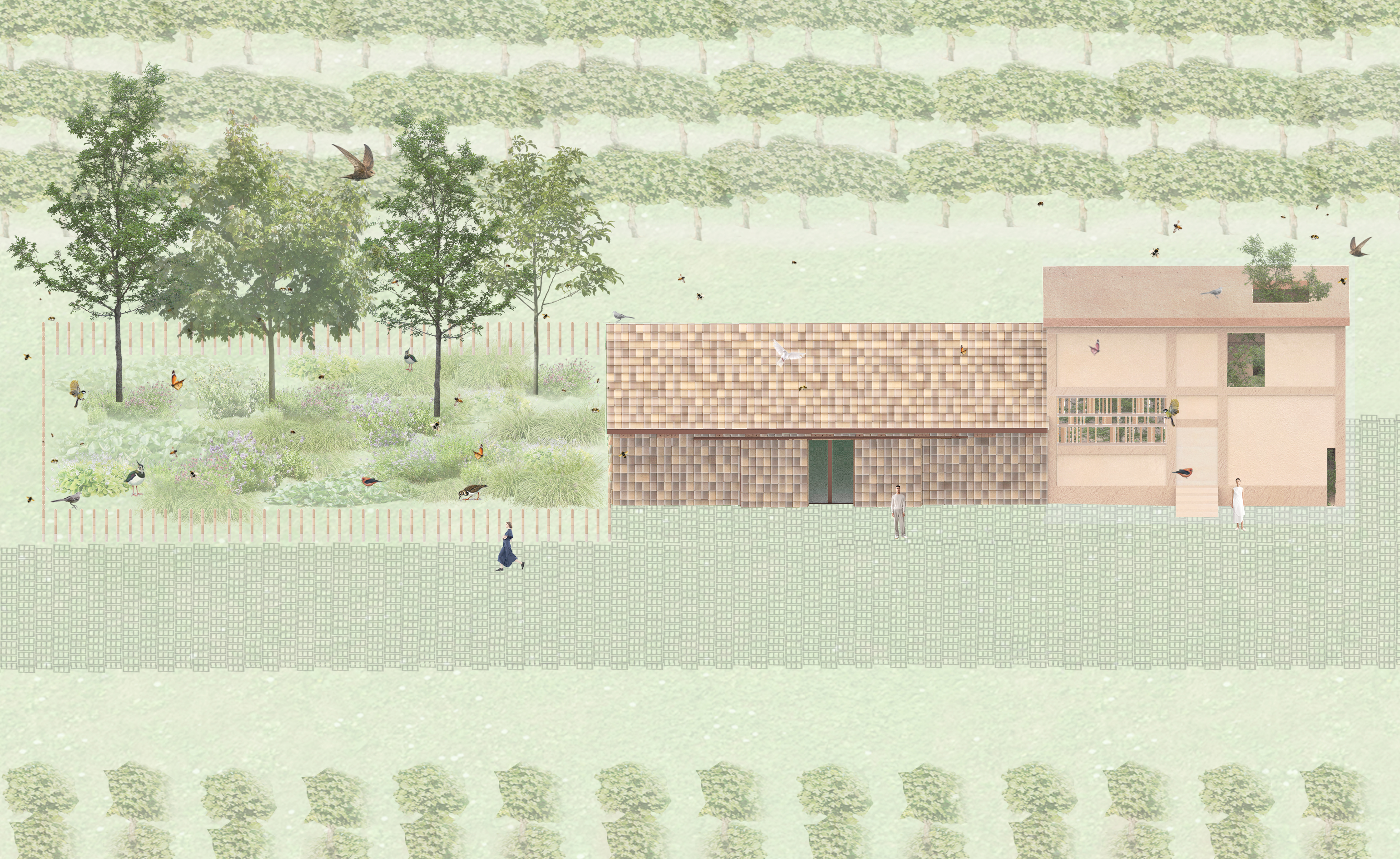
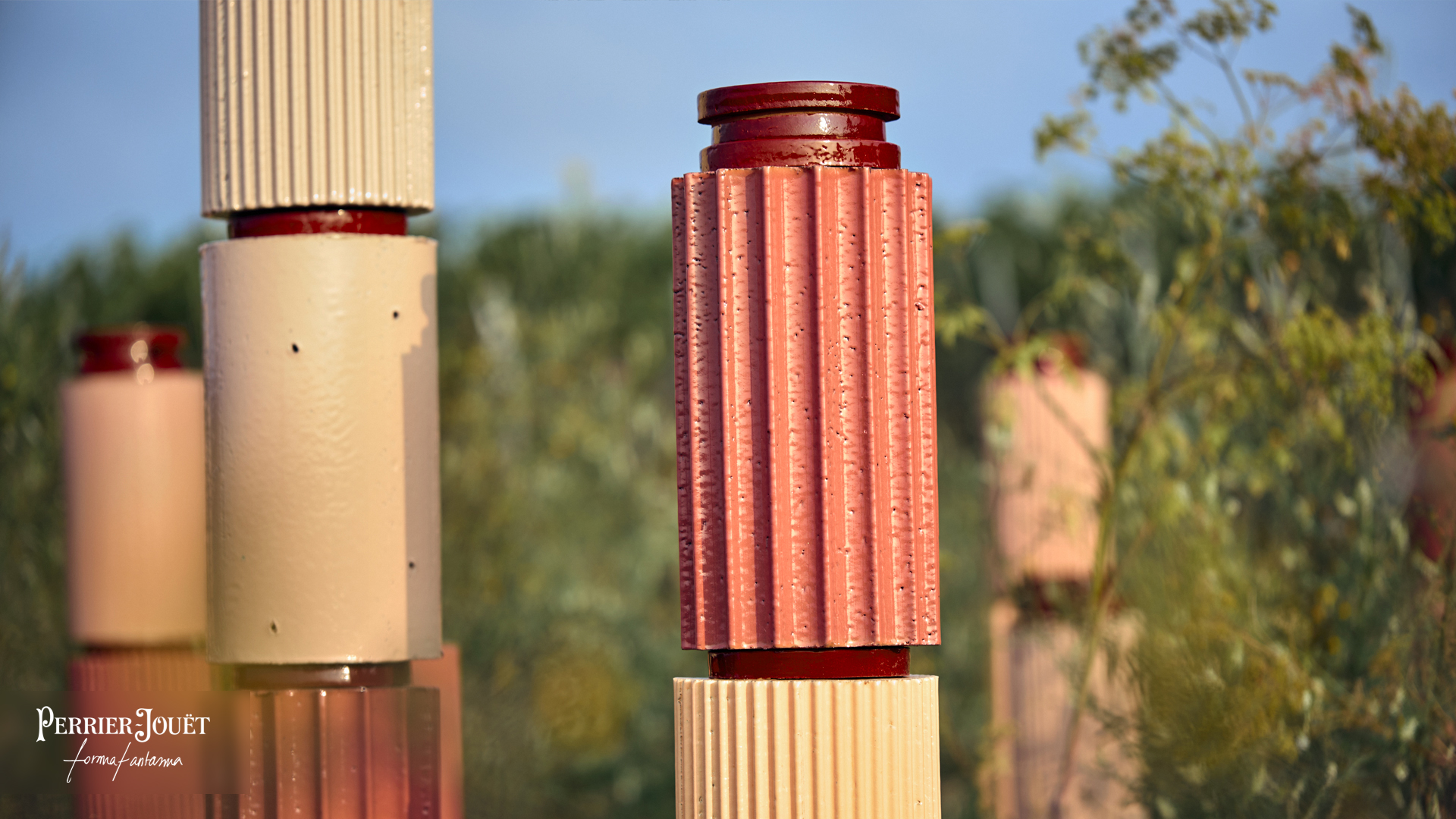
Perhaps you are reading this, wondering why should I care? Well, two reasons. Climate warming will undoubtedly endanger future Champagne harvests and if the richest 1% of the world account for more carbon emissions than the poorest 66%, it might be worth considering which champagne you choose to quaff. The ambition is that this small rewilded plot will become a hive of flora and fauna, redressing the harmful monoculture of the vineyards. Thirty-two of these modular stacked caryatids, feature small entry holes leading into cavities tailormade to house particular insects and pollinators; wasps, bees, spiders etc. Such an intervention may seem smallscale, but this attempt to increase biodiversity by providing a haven for insects, creatures very much under threat today, could be the start of something big and transformative for the viticulture of the region.
Caroline Bianco, Culture and Creative Director of Martell Mumm Perrier-Jouët certainly hopes so. “It was very important for all of us that this intervention on the vineyard, this platform of exchange with designer, researcher, scientist, students and the public, could have a positive impact on this environment beyond the message that it carries,” she says. “Beyond the border of each of the champagnes, an initiative that could be in the future implemented on any other territories with the same ecosystem.” Bianco’s arrival at the Maison has been the catalyst for this regenerative design endeavour, which is a notable a departure for Perrier-Jouët. Though only in its purpose, not in its connection to nature and design.
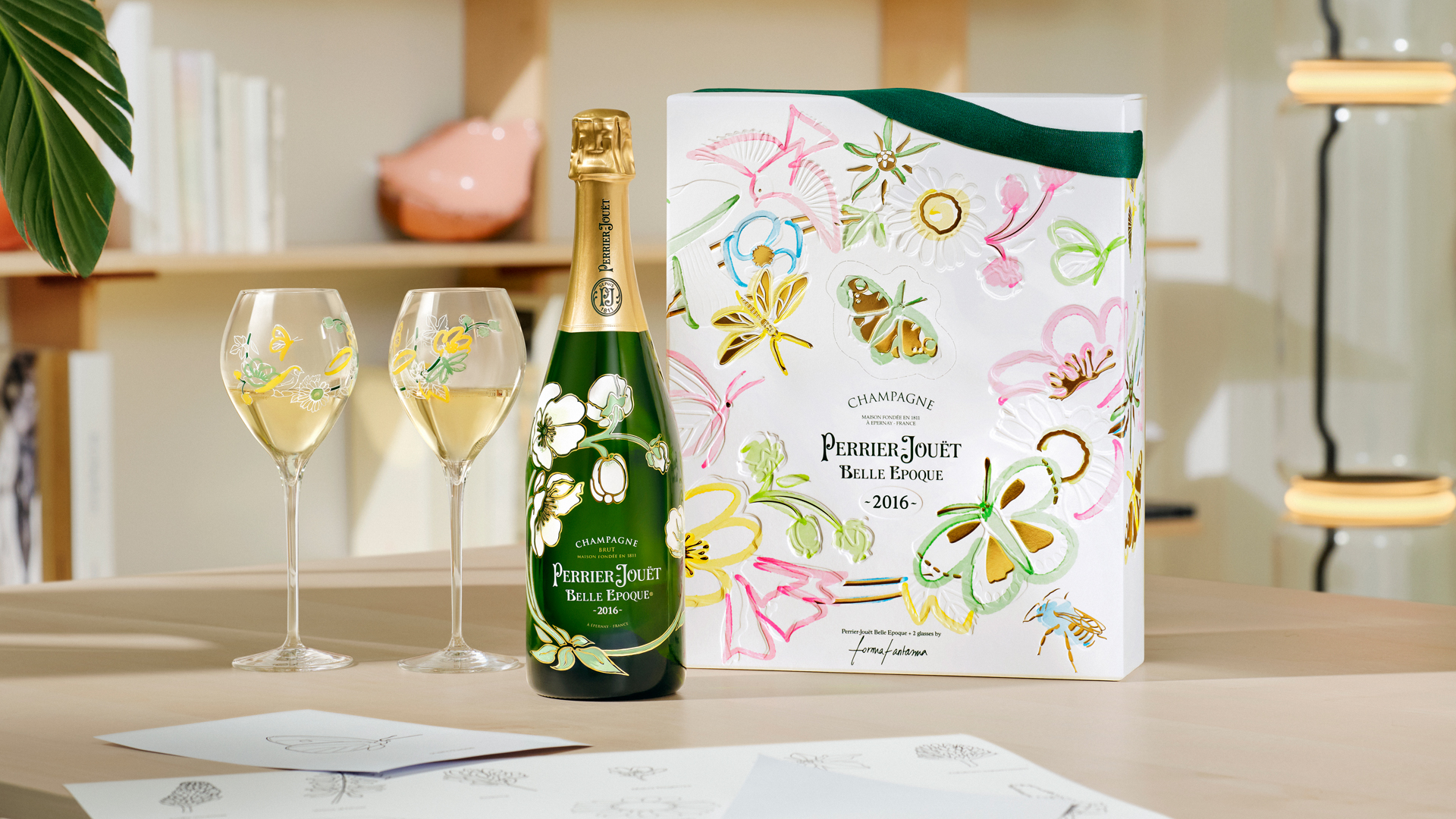
Patronage of the design is embedded in Perrier-Jouët’s DNA, as signified by the floral emblem of the maison, the arabesque Japanese anemone that adorns the bottles. This was originally conceived for the brand in 1902 by the Art Nouveau glass artist Emile Gallé. The brand’s 1811 founders Pierre-Nicolas Perrier and Rose-Adélaïde Jouët were devotees of both art and nature; Perrier and his son Charles were botanists and horticulturists who brought progressive viticulture to 19th-century champagne making.
However, it was Charles’ successors, Henri and Octave Gallice who infused the brand with the beauty of the Belle Époque period. Octave in particular, who revelled in the heady atmosphere of early 19th-century Paris, amassed a wealth of Art Nouveau pieces by the likes of Gallé, Louis Majorelle and creator of the early decorative entrances of Paris Metro stations, Hector Guimard. Touring the Maison Belle Epoque, guides proudly inform you that today it’s home to the largest private collection of Art Nouveau furniture, lamps, glassware, artworks and sculptures in the world.
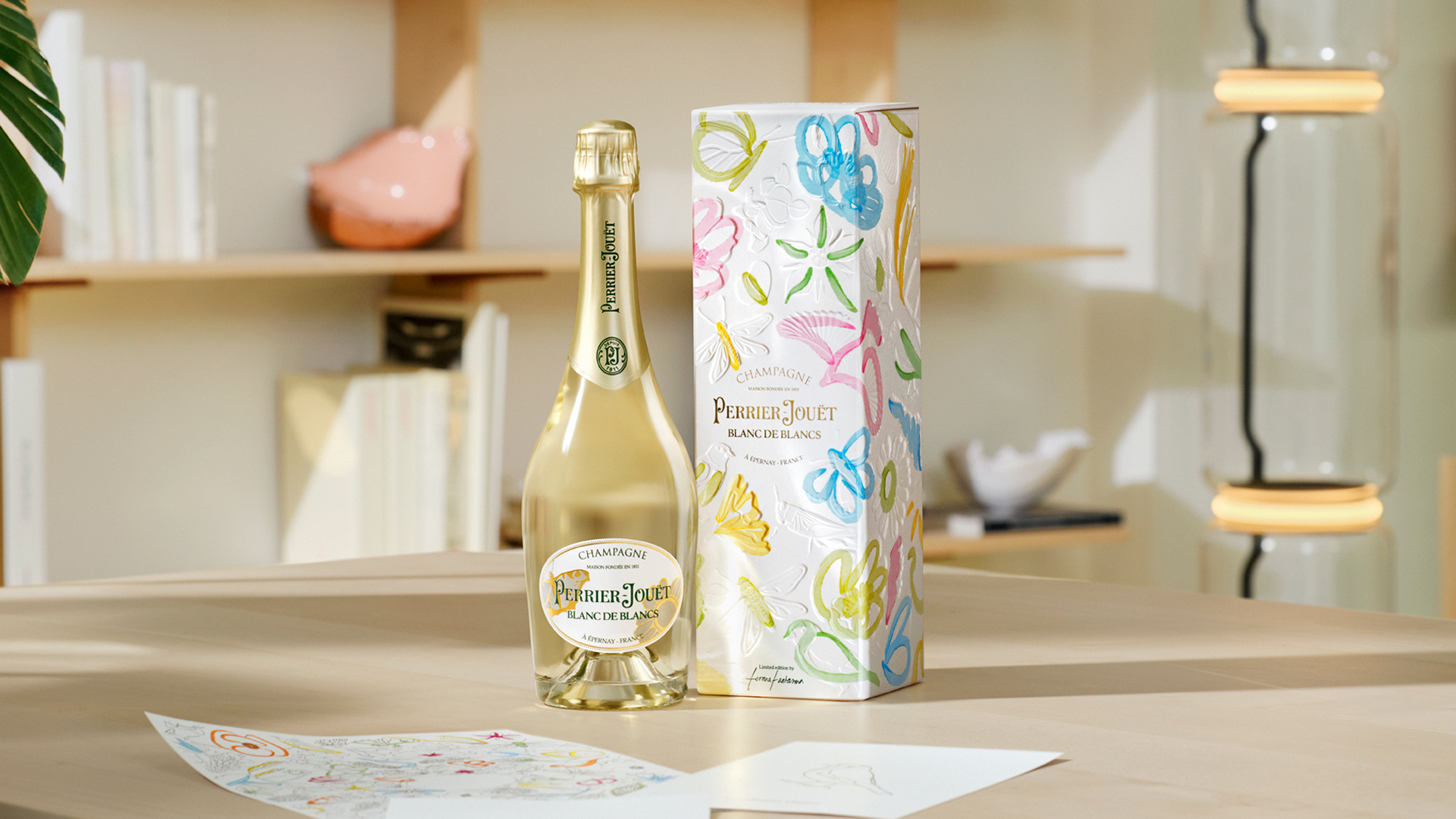
Perrier-Jouët began expanding upon this heritage in 2012, collaborating with different leading creatives to produce an installation for the annual fair Design Miami every December. Past pieces displayed in the Epernay maison include British designer Bethan Laura Wood’s 1918 colourful HyperNature tree, blooming with hand-dyed PVC wisteria that casts kaleidoscopic-like shadows; a kinetic table installation Ephemerá created by Austrian duo Mischer’Traxler in 1914, featuring a marquetry-style surface of motion-activiated botanical motifs which spring to life, when anyone comes near. And back in 2012 the simple, but mesmerising installation Lost Time by Anglo-Dutch Studio Glithero remains a poetically haunting presence in the Maison Belle Epoque cellars. Beaded-chain loops inspired by Gaudí’s method of creating the perfect curve, suspend from discs, mirrored below in a shallow pool. Evocative of stalactites (which do exist in the cellars), stalagmites and cobwebs, it’s very pretty, but definitely more design-art than functional-design.
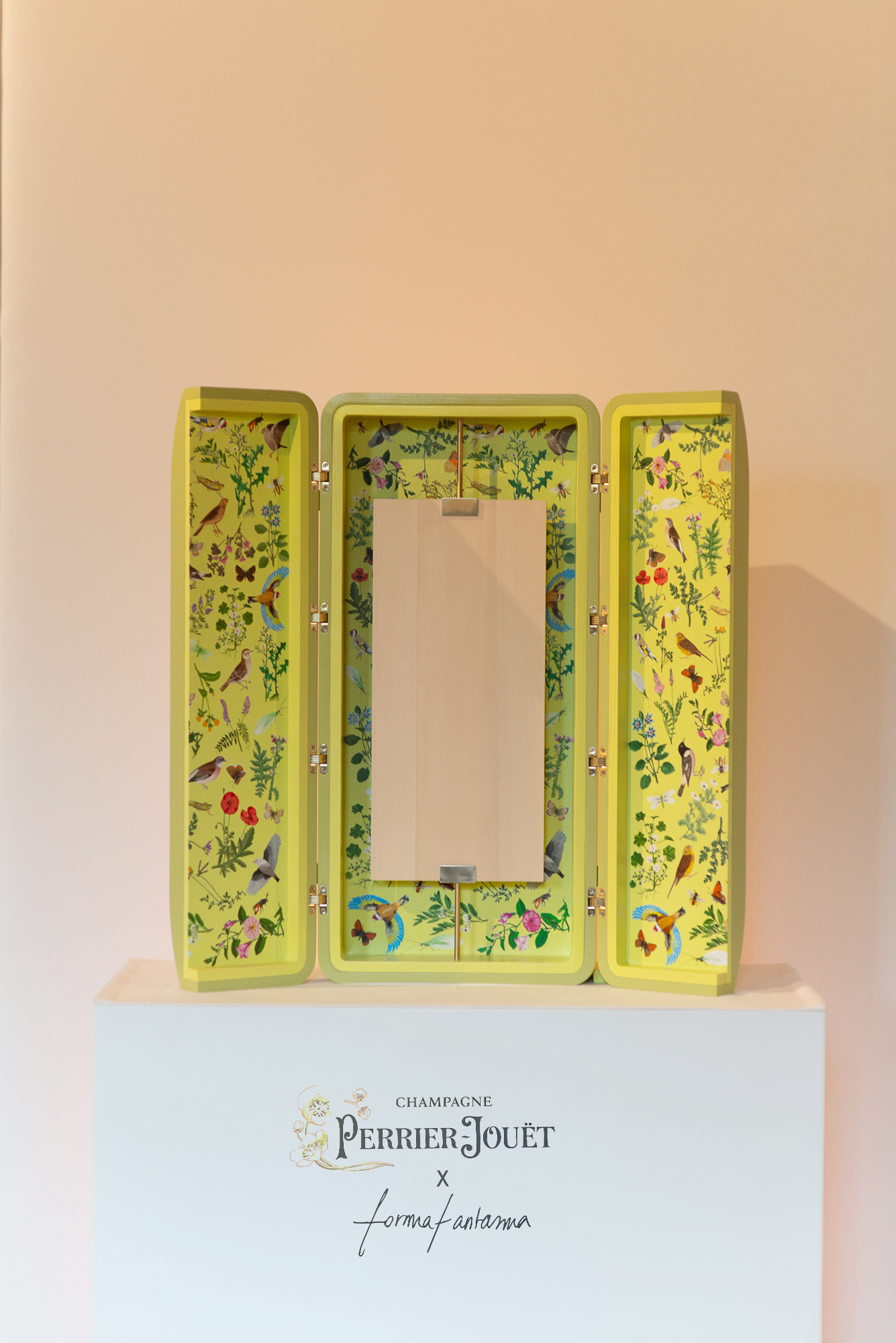
Cohabitare is a refreshing recalibration in this context, fuelled by Bianco who has brought her experience from a brilliant interdisciplinary centre of innovation in Arles, France called Atelier LUMA. This foundation works across disciplines with non-extractavist local materials, such as agricultural coproducts, algae, invasive plants; engaging designers and craftspeople with farmers and scientists, to transform things like crystallised salt into wall cladding and rice straw into space dividers. Who better to shift Perrier-Jouët’s focus into this intentional and pragmatic realm than FormaFantasma, a studio that operates in a similar fashion.
Quite the dashing Prada-wearing duo, work-life partners Andrea Trimarchi and Simone Farresin founded their Rotterdam- and Milan-based studio in 2009 and together with their team have exploded the paradigm of contemporary design – “transformative interventions” are their forte. FormaFantasma’s work ranges from products which often address the climate emergency in their production, supply chain or narrative, check out their rugs for CC-Tapis or Tacchini Flock upholstery. They also spearheaded the popular climate-focused Prada talk series at Milan Design Week and are currently creative directors of the Venetian textiles company Rubelli.
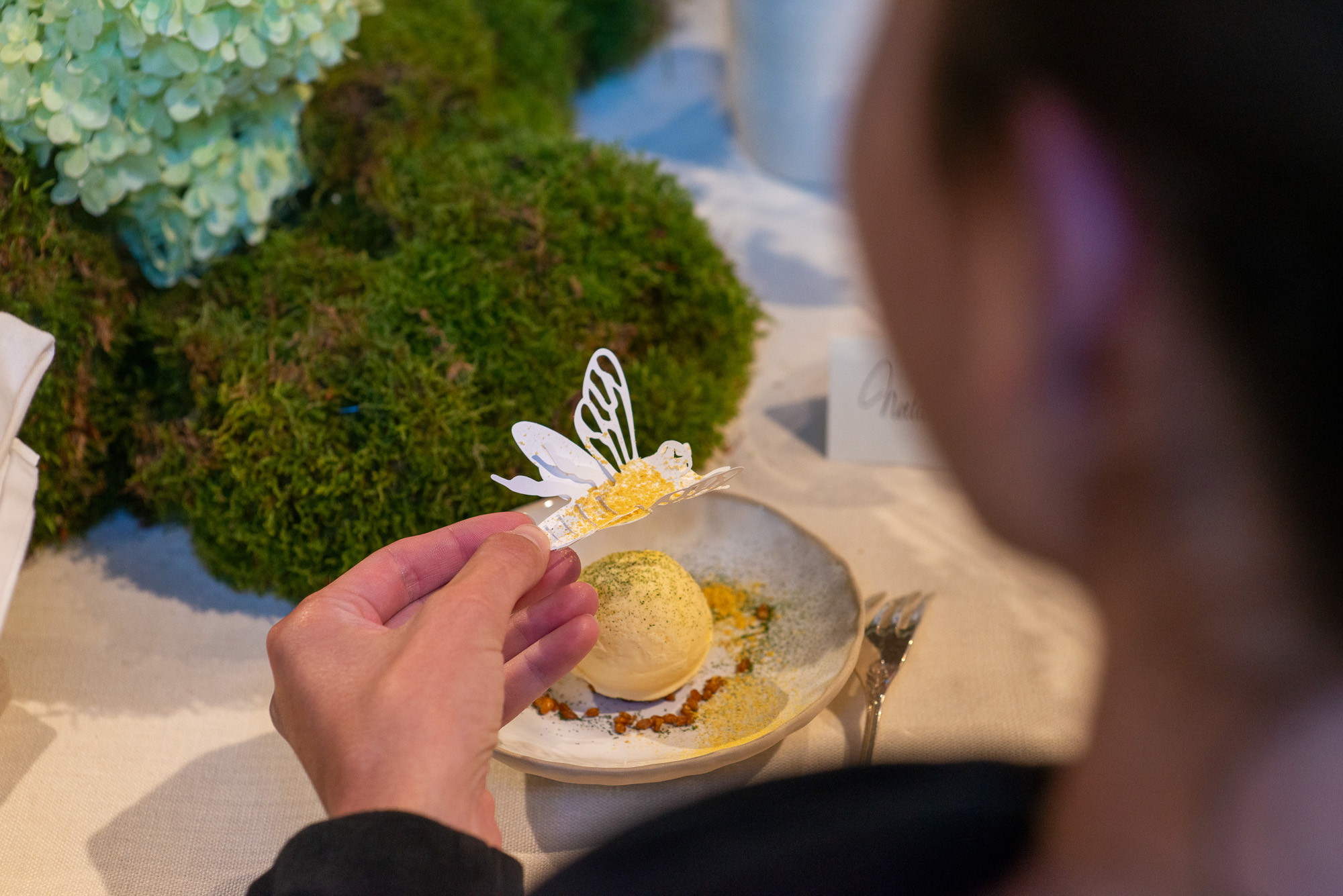
For Farresin the project, which was two years in the making, is a natural evolution for Perrier-Jouët. “The relationship we should have with the environment should not just be of admiration from an aesthetic point of view but also to actually understand how it operates,” he says standing in front of Biodiversity Island alongside Trimarchi, who cradles their sleek Italian greyhound (fittingly named ‘Terra’, Earth in Italian). “It is the responsibility of design to actually enter into the conversation which is not just based on aesthetics and this is for us a way of interpreting the roots of Art Nouveau, which was also visually appealing and inspired by nature. This was also a historical moment when there were plenty of innovations on a scientific level, it's this link that we find between the two moments in time. The challenge is to demonstrate that design can not only draw inspiration from nature but also contribute to its well-being”
Perrier-Jouët began addressing environmental issues in their vineyards ten years ago, they’re also tackling packaging and the parent group Martell Mumm Perrier-Jouët is aiming to make TOWT sailing cargo ships their principal means of transport. This summer saw the inaugural sailing of 400,000 bottles to New York. In 2021 Perrier-Jouët kicked off an ambitious regenerative viticulture programme. Over 40% of its vineyards now incorporate methods that are compensating the effects of monoculture farming, such as biomass plant and floral covers which nourish the soil (the aim is to hit 100% by 2030), vitiforestry and the planning of green corridors.
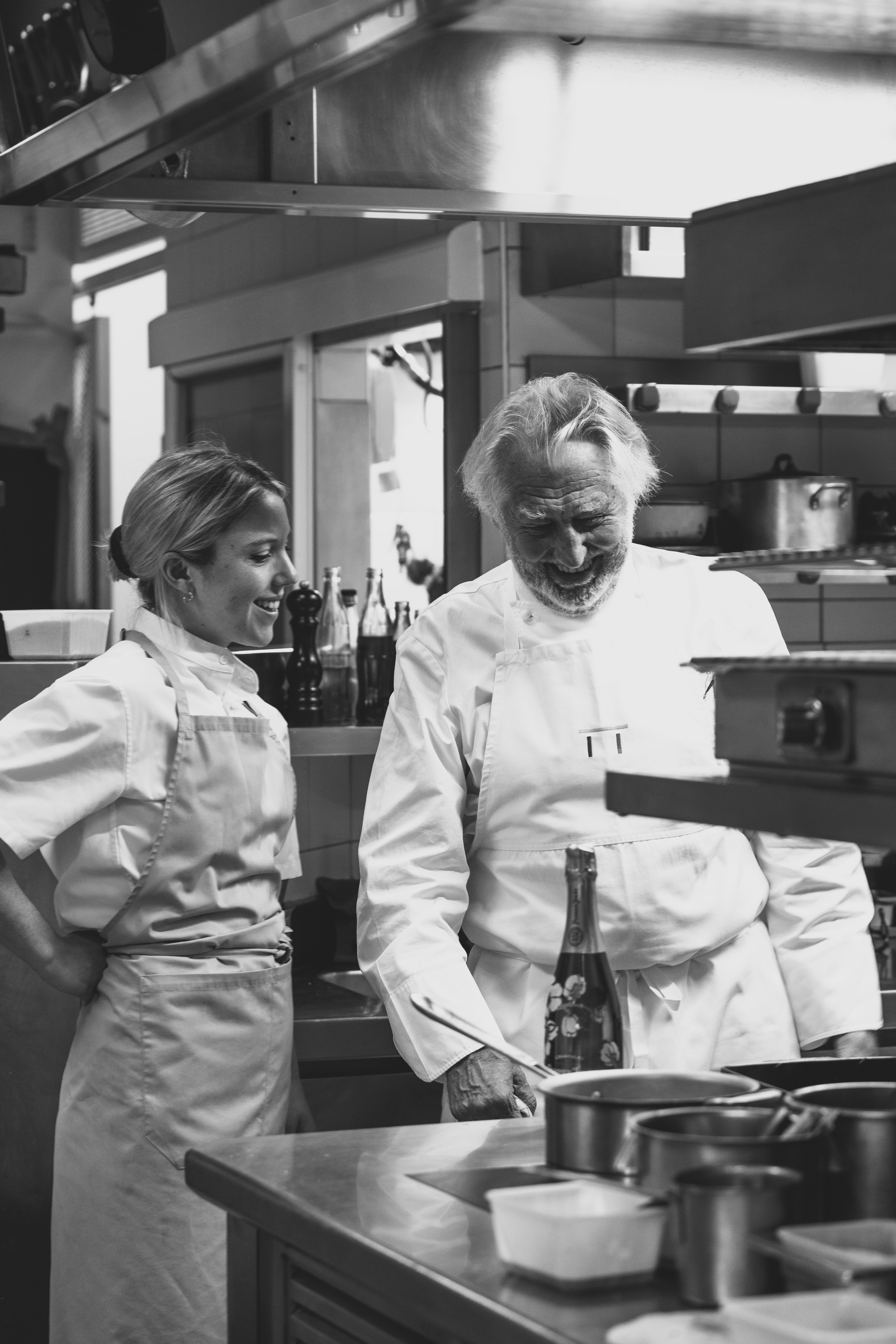
Biodiversity Island is just the start of Cohabitare with FormaFantasma. Two neighbouring farm buildings, the Assembly Grange and Observatory Tower, will be repurposed; the former will host residencies and foster community engagement and the latter will be devoted to vegetation and provide shelter for more local species – bats, birds and whatever else chooses to nest there. To spread the word, Perrier-Jouët will stage the conversational Banquet of Nature (for the launch a Pierre Gagnaire and Manon Fleury feast) including a soundtrack of the island’s wildlife recorded by the pioneering Italian eco-acoustic composer David Monacchi, at forthcoming global design events such as Design Miami and Milan Design Week. Meanwhile, scientists will continue to monitor species at Biodiversity Island, which on a crisp sunny September day was already beautifully abuzz.
Learn more via perrier-jouet.com/en-ww/artistic-collaborations/formafantasma
